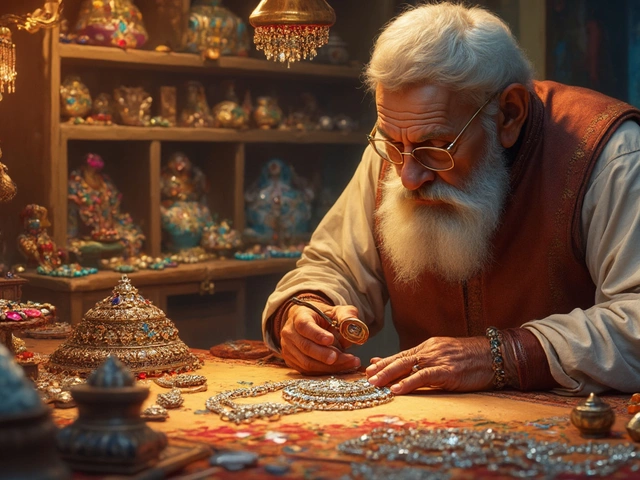Jewelry Safety: How to Spot Fakes, Read Hallmarks, and Keep Your Treasures Safe
Buying jewelry should feel exciting, not stressful. Whether you’re picking a gold chain for a gift or checking a silver bangle you found at a market, knowing a few safety basics can save you money and heartache. Below are practical steps you can take right now to make sure every piece you own is genuine and well‑protected.
Quick Tests to Spot Cheap or Fake Jewelry
The first thing to do is a visual check. Real gold and silver carry clear stamps – look for "875" for 21K gold, "916" for pure silver, or "833" for 83.3% silver. If the stamp is missing, faded, or looks like a random number, it’s a red flag.
Next, grab a magnet. Pure gold and silver aren’t magnetic, so a strong magnet that sticks means the piece is likely plated over a cheaper metal. For rings and heavier items, compare weight with a similar genuine piece – fakes are often lighter because they use base metals.
Finally, do the “acid test" only if you’re comfortable. A tiny drop of acid on a hidden spot can reveal the true metal, but it can also damage a piece if used wrong. Most people stick to the stamp, magnet, and weight checks for everyday safety.
Understanding Hallmarks and Purity Marks
Hallmarks are your friends. In India, the Bureau of Indian Standards (BIS) certifies gold with a specific logo and purity mark. A genuine 21K gold item will read "21K" or "875" plus the BIS symbol. Silver pieces often show "925" for sterling or "833" for older Indian silver. Knowing these numbers lets you verify authenticity before you pay.
If you buy online, ask the seller for clear photos of the hallmark. A blurry or cropped image is a sign they might be hiding something. Reputable sellers will also provide a certificate of authenticity for higher‑value items.
When in doubt, visit a trusted jeweler. They can run a professional test with a jeweler’s loupe and a portable X‑ray fluorescence (XRF) machine. It’s a small cost for peace of mind, especially on big purchases like diamond rings or antique pieces.
Beyond spotting fakes, protecting the jewelry you already own is crucial. Store gold and silver in separate, airtight pouches to avoid tarnish. A soft cloth or jewelry box with compartments reduces scratching. Keep valuable pieces in a safe or a safety deposit box if you don’t wear them often.
Insurance is another layer of safety. A simple personal property rider can cover loss, theft, or damage. Document each item with photos, purchase receipts, and hallmark details – this speeds up any future claim.
Finally, practice good hygiene. Remove jewelry before heavy workouts, swimming, or using harsh chemicals. A quick rinse with mild soap and a soft brush keeps the metal shining and reduces the chance of hidden damage.
By mastering a few simple tests, understanding hallmarks, and storing your pieces properly, you turn jewelry buying from a gamble into a confident, safe experience. The next time you see a glittering necklace, you’ll know exactly what to look for and how to protect your investment.
Sleeping with Bangles: Safety, Comfort, and Traditions You Should Know
Thinking of sleeping with your bangles on? Understand the tradition, safety, comfort, and practical tips to protect your wrists and style, all in one detailed read.





